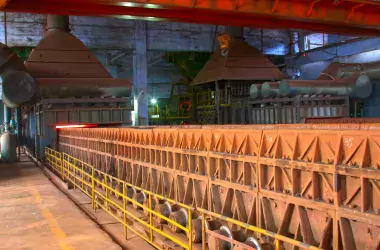Iron ore agglomeration

Increased sinter plant productivity
Fine-crushed limestone is used as a flux in iron ore sintering. It adjusts the overall basicity of the iron burden and plays a vital role in the formation of slag in the blast furnace process. Lime-based binders increase sinter plant productivity. Higher percentages of ultra-fine ore can also be combined with lime-based products with no loss of productivity.
Correct basicity for improved efficiency
In pellet plants, finely-crushed limestone and dolomite result in products with the desired basicity (ratio CaO + MgO vs. SiO2).

Pelletization
Pelletization involves the agglomeration of ultra-fine ores with other raw materials, such as coal, hydrated lime and limestone. Once the materials have been homogenized in suitable quantities (for ideal mass balance), the mixture is sent to a disc or a pelletization drum. The result is an 8 to 18-mm diameter pellet that is burned at approximately 1,350°C to increase its mechanical resistance. Certain specialty hydrated limes are an efficient alternative binder to high SiO2 bentonite.
Quality blast-furnace slag
Dolomite provides MgO which the process requires to achieve proper fluidity of blast furnace slag.